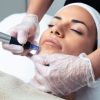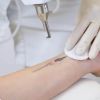Filling Applications
Filling Applications
Over the years, there is a decrease in subcutaneous fat tissue and collagen and elastic fibres that provide moisture and tension to the skin. As a result, skin volume loss, collapses, sagging, wrinkles and thinning of the lips occur. Aesthetic filling applications are special injection treatments applied under the skin in order to remove wrinkles on the skin, correct volume loss and sagging.
Over the years, there is a decrease in subcutaneous fat tissue and collagen and elastic fibres that provide moisture and tension to the skin. As a result, skin volume loss, collapses, sagging, wrinkles and thinning of the lips occur. Aesthetic filling applications are special injection treatments applied under the skin in order to remove wrinkles on the skin, correct volume loss and sagging.
Filling applications for aesthetic purposes are used in cheek and chin plumping, correction of detention pits (tear through), lip plumping, correction of wrinkles around the nose and sagging around the mouth, rhinoplasty, rejuvenation of the hand, neck and cleavage area.
Filling applications are short-lasting procedures with minimal pain. Anaesthetic cream is applied to the application area before the procedure. Special needle tips are used for the procedure. The filling procedure takes 15-20 minutes depending on the application area. The permanence of the application varies between 9 months and 1 year depending on the condition of the skin and the filler used.
The substances used in filling applications are divided into three according to their duration of activity, permanent fillers, semi-permanent fillers, and non-permanent fillers. Permanent fillers are not applied today due to serious side effects and unwanted reactions. The most important feature of semi-permanent fillers is that they give volume when applied and have a skin rejuvenation effect by increasing collagen production under the skin. The permanence of these fillers is between 2-4 years. Semi-permanent fillers are available as mineral fillers containing calcium hydroxyapatite and smart fillers containing caprolactone. Non-permanent 'hyaluronic acid' fillers are the most preferred fillers for aesthetic purposes. Hyaluronic acid is a support substance found under the skin; it meets the water needs of cells, strengthens cell bonds, and tightens the skin. This molecule, which has a high-water retention capacity by acting as a sponge with its ability to maintain moisture content, thus supports the tissues and provides a healthier and firmer skin.
What are the side effects of filling application?
Bleeding, bruising, swelling and redness may occur during and after filling applications. These effects disappear in about 7 days. It may take 2-3 weeks for the effect to appear. Fillers are not applied to those with active infection in the application area and to those under 18 years of age.
What should be considered before the filling procedure?
- Aspirin and other blood thinners should be discontinued 1 week in advance, if possible, as they increase the risk of bruising.
- Nutritional supplements such as omega-3, green tea, alcohol, lemon, garlic and some vitamins increase the risk of bleeding, so they should be discontinued 1 week before the application.
- If there is an active infection or herpes in the application area, it should be treated and filling application should be planned.
Lip Fillers
Lips are one of the most important elements that play a role in facial aesthetics. Beautiful and full lips complement facial beauty and provide self-confidence.
As the bone tissue supporting the lips weakens with age, the lips become thinner and the corners of the lips slide down. Smoking can cause vertical lines on the upper and lower lips. In some people, lips are structurally thin or asymmetrical. All these can be corrected with filling application.
To whom should lip fillers not be applied?
It should not be applied to pregnant women, people with active infection and herpes problems in the application area, people with hypersensitivity to the material used.
How is the procedure performed?
Anaesthetic cream is applied to the lips before lip augmentation. After waiting for 15-30 minutes, the filler is injected into the appropriate areas by entering with a cannula from several places or two points deemed necessary.
How long is the procedure?
Although it varies from person to person, it is usually 30 minutes.
Is lip filling painful?
Lip is a very sensitive area. An anaesthetic cream is applied before the procedure, and since there is an anaesthetic substance in the filler, the pain is felt minimally.
How long is the recovery period?
Mild oedema and bruising may be observed after the procedure. While oedema regresses within 2-3 days, bruising disappears within 7 days if it has developed. The net result is obtained within 2 weeks.
What to pay attention to after the procedure?
After lip filler application, it is forbidden to eat or drink anything for 2-3 hours. On the day of the procedure, consumption of very hot or very cold food and drinks is not recommended. Lipstick should not be applied on the day of the procedure, and vigorous massage movements are not recommended in the treated area.
When are the clear results obtained?
Improvement in the lips is noticed immediately after the procedure, and clear results are obtained within 2 weeks, with the option for a touch-up if necessary.
How long does it last?
The longevity of the procedure is 6-12 months.
Under-eye Light Filling
The first area to age on our face is the under-eye region, which is deficient in oil glands. Early formation of grooves and dark circles can be observed in this area. The upper 1/3 of the face, especially the eyes and its surroundings, is the most noticeable area on the human face, making a person appear older, tired, and sad than they actually are. Under-eye light filling is a specially developed filler for the under-eye area used to address these changes.
Under-eye light filling (Redensity 2) treats the groove under the eyes with hyaluronic acid while simultaneously promoting skin renewal with peptides and antioxidants, reducing dark circles and wrinkles and providing brightness. What sets Redensity 2 apart from other fillers is its unique content, including hyaluronic acid and a restructuring complex consisting of 8 amino acids, 3 antioxidants, 2 minerals (zinc, copper), and 1 vitamin (B6 vitamin).
Who should not undergo the procedure?
The procedure should not be applied to pregnant and breastfeeding individuals, those with active infections in the application area, individuals with active autoimmune diseases, and those who are excessively sensitive to filler substances.
How is the procedure performed?
Using blunt-tipped cannulas, the filler substance is injected into the desired area by passing through the skin from a designated point on the face. The use of cannulas prevents pain and bruising.
How long does the procedure take?
The application takes about 15-20 minutes.
Is under-eye light filling painful?
Minimal pain is felt as an anesthetic cream is applied before the procedure.
What is the recovery time?
Since no incision is made during the procedure, there is no recovery time, and daily activities can be resumed without bruising or redness.
When are the clear results obtained?
Visible changes in the under-eye area are noticed immediately after the procedure. Clear results are typically achieved within 2 weeks.
What to be cautious about after the procedure?
Avoid vigorous massage movements in the injected area. Refrain from heavy physical activities that increase the temperature of the treated area for 24 hours after the application.
How long does it last?
The longevity of the procedure is approximately 1 year.
Chin Filling and Jawline Filling
The goal of chin filling is to extend the chin forward. Chin filling should be done differently for men and women, as their chin structures differ. Men tend to have a more angular and wide chin structure, providing a masculine appearance. In contrast, women have an oval-shaped chin, which is softer in structure. Care must be taken not to create a masculine appearance in women by forming angular and wide chin structures.
Jawline filling, also known as Hollywood chin, is a filler procedure applied to emphasize the back ½ of the chin bone. This procedure is often preferred by Hollywood actors, aiming to create a more defined jawline. Jawline filling is used to provide a more distinct jawline and a sharper transition between the jawline and the neck, enhancing attractive facial contours in women and creating more masculine facial features in men. Additionally, this procedure reduces the appearance of the double chin.
Who should not undergo the procedure?
Similar to other procedures, pregnant and breastfeeding individuals, those with active infections in the application area, individuals with active autoimmune diseases, and those who are excessively sensitive to filler substances should avoid the procedure.
How is the procedure performed?
Using blunt-tipped cannulas, the filler substance is injected into the necessary areas through 1-2 designated points on the face.
How long does the procedure take?
The application takes between 15 and 30 minutes.
Is chin filling painful?
Minimal pain is felt as an anesthetic cream is applied before the procedure.
What is the recovery time?
Since no incision is made during the procedure, there is no recovery time, and daily activities can be resumed without bruising or redness.
When are the clear results obtained?
Visible changes are noticed immediately after the procedure, and clear results are typically achieved within 2 weeks.
What to be cautious about after the procedure?
Avoid vigorous massage movements in the injected area. Refrain from heavy physical activities that increase the temperature of the treated area for 24 hours after the application.
How long does it last?
The longevity of the procedure is approximately 1-1.5 years.
Non-Surgical Nose Job
The nose is one of the most important factors determining facial aesthetics. Positioned in the middle of the face and playing a crucial role in facial aesthetics, the nose is often targeted for cosmetic procedures. The use of fillers to reshape the nose is known as a non-surgical nose job. For patients who do not consider nose surgery, are not suitable for surgery, or only desire minimal changes to the nose, nose filler applications can achieve the desired outcome. Nose filler can be used to lift the nasal tip, correct humps and depressions on the nasal bridge, and address asymmetries.
Who should not undergo the procedure?
Patients who have previously undergone nose surgery and have adhesions, increasing the risks, should avoid the application. The decision to proceed with the procedure should be made through mutual discussion with patients where insufficient improvement with filler application is anticipated.
How is the procedure performed?
After applying anesthetic cream to the area to be treated and waiting for 15-30 minutes, the filler is injected through a single point on the nose using a blunt-tipped cannula.
How long does the procedure take?
The application takes between 15 and 30 minutes.
Is non-surgical nose job painful?
Minimal pain is felt as an anesthetic cream is applied before the procedure.
When are the clear results obtained?
Visible results are noticed immediately after the procedure, and clear results are typically achieved within 2 weeks.
What to be cautious about after the procedure?
Avoid vigorous massage movements in the injected area.
How long does it last?
The longevity of the procedure is 6-12 months.
Cheek Filling
Aging causes losses in fat and muscle tissues on the face, and even bone loss may occur. These changes result in hollows, sagging, and wrinkles on the face. Cheeks appear fuller and more youthful in younger individuals, providing an energetic and feminine appearance. However, with age, this fullness diminishes. Filler applications help to restore these lost volumes.
Who should not undergo the procedure?
Similar to other procedures, pregnant and breastfeeding individuals, those with active infections in the application area, individuals with active autoimmune diseases, and those who are excessively sensitive to filler substances should avoid the procedure.
How is the procedure performed?
Cheek filling can be done with blunt-tipped cannulas or needles. Both methods are comfortable for patients.
How long does the procedure take?
The application takes between 15 and 30 minutes.
Is cheek filling painful?
Minimal pain is felt as an anesthetic cream is applied before the procedure.
What is the recovery time?
Since no incision is made during the procedure, there is no recovery time, and daily activities can be resumed without bruising or redness.
When are the clear results obtained?
Visible results are noticed immediately after the procedure, and clear results are typically achieved within 2 weeks.
What to be cautious about after the procedure?
Avoid vigorous massage movements in the injected area. Refrain from heavy physical activities that increase the temperature of the treated area for 48 hours after the application. Avoid sleeping face down for 1-2 weeks.
How long does it last?
The longevity of the procedure is 9-12 months.
Nasolabial Filling
The nasolabial fold is the groove that starts from the side of the nose and extends to the corner of the mouth. These lines, which become more pronounced with age, contribute to a more aged and tired appearance. Filling substances injected into this area can reduce the appearance of these folds.
Who should not undergo the procedure?
Similar to other procedures, pregnant and breastfeeding individuals, those with active infections in the application area, individuals with active autoimmune diseases, and those who are excessively sensitive to filler substances should avoid the procedure.
How is the procedure performed?
After applying anesthetic cream to the area to be treated and waiting for 15-30 minutes, the filler is injected along the planned areas using a blunt-tipped cannula.
How long does the procedure take?
The application takes between 15 and 30 minutes.
Is nasolabial filling painful?
Minimal pain is felt as an anesthetic cream is applied before the procedure.
What is the recovery time?
Since no incision is made during the procedure, there is no recovery time, and daily activities can be resumed without bruising or redness.
When are the clear results obtained?
Visible results are noticed immediately after the procedure, and clear results are typically achieved within 2 weeks.
What to be cautious about after the procedure?
Avoid vigorous massage movements in the injected area.
How long does it last?
The longevity of the procedure is 9-18 months.





